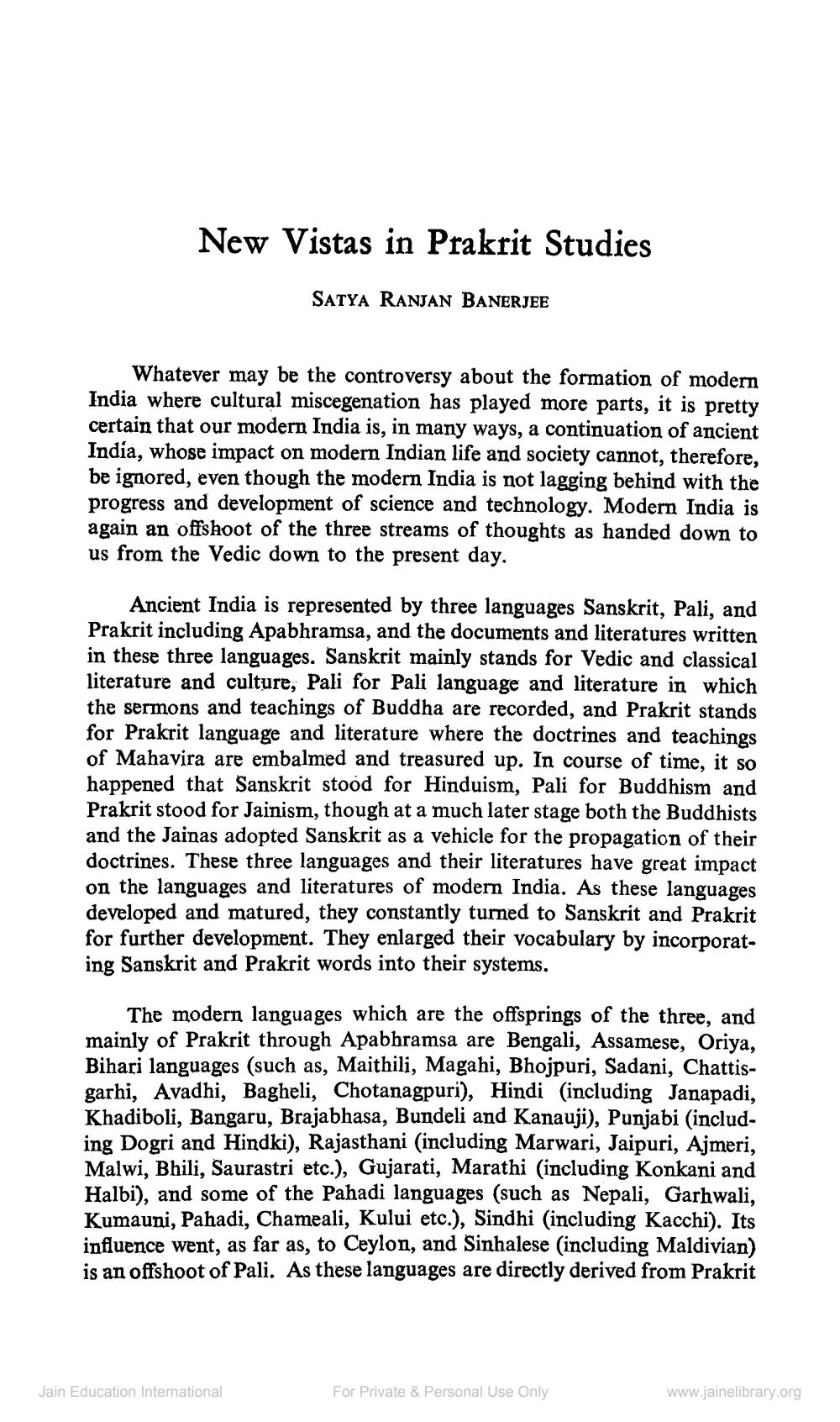Book Title: Jain Journal 1990 10 Author(s): Jain Bhawan Publication Publisher: Jain Bhawan Publication View full book textPage 4
________________ New Vistas in Prakrit Studies SATYA RANJAN BANERJEE Whatever may be the controversy about the formation of modern India where cultural miscegenation has played more parts, it is pretty certain that our modern India is, in many ways, a continuation of ancient India, whose impact on modern Indian life and society cannot, therefore, be ignored, even though the modern India is not lagging behind with the progress and development of science and technology. Modern India is again an offshoot of the three streams of thoughts as handed down to us from the Vedic down to the present day. Ancient India is represented by three languages Sanskrit, Pali, and Prakrit including Apabhramsa, and the documents and literatures written in these three languages. Sanskrit mainly stands for Vedic and classical literature and culture, Pali for Pali language and literature in which the sermons and teachings of Buddha are recorded, and Prakrit stands for Prakrit language and literature where the doctrines and teachings of Mahavira are embalmed and treasured up. In course of time, it so happened that Sanskrit stood for Hinduism, Pali for Buddhism and Prakrit stood for Jainism, though at a much later stage both the Buddhists and the Jainas adopted Sanskrit as a vehicle for the propagation of their doctrines. These three languages and their literatures have great impact on the languages and literatures of modern India. As these languages developed and matured, they constantly turned to Sanskrit and Prakrit for further development. They enlarged their vocabulary by incorporating Sanskrit and Prakrit words into their systems. The modern languages which are the offsprings of the three, and mainly of Prakrit through Apabhramsa are Bengali, Assamese, Oriya, Bihari languages (such as, Maithili, Magahi, Bhojpuri, Sadani, Chattisgarhi, Avadhi, Bagheli, Chotanagpuri), Hindi (including Janapadi, Khadiboli, Bangaru, Brajabhasa, Bundeli and Kanauji), Punjabi (including Dogri and Hindki), Rajasthani (including Marwari, Jaipuri, Ajmeri, Malwi, Bhili, Saurastri etc.), Gujarati, Marathi (including Konkani and Halbi), and some of the Pahadi languages (such as Nepali, Garhwali, Kumauni, Pahadi, Chameali, Kului etc.), Sindhi (including Kacchi). Its influence went, as far as, to Ceylon, and Sinhalese (including Maldivian) is an offshoot of Pali. As these languages are directly derived from Prakrit Jain Education International For Private & Personal Use Only www.jainelibrary.orgPage Navigation
1 2 3 4 5 6 7 8 9 10 11 12 13 14 15 16 17 18 19 20 21 22 23 24 25 26 27 28 29 30 31 32 33 34 35 36 37 38 39 40 41 42 ... 61
